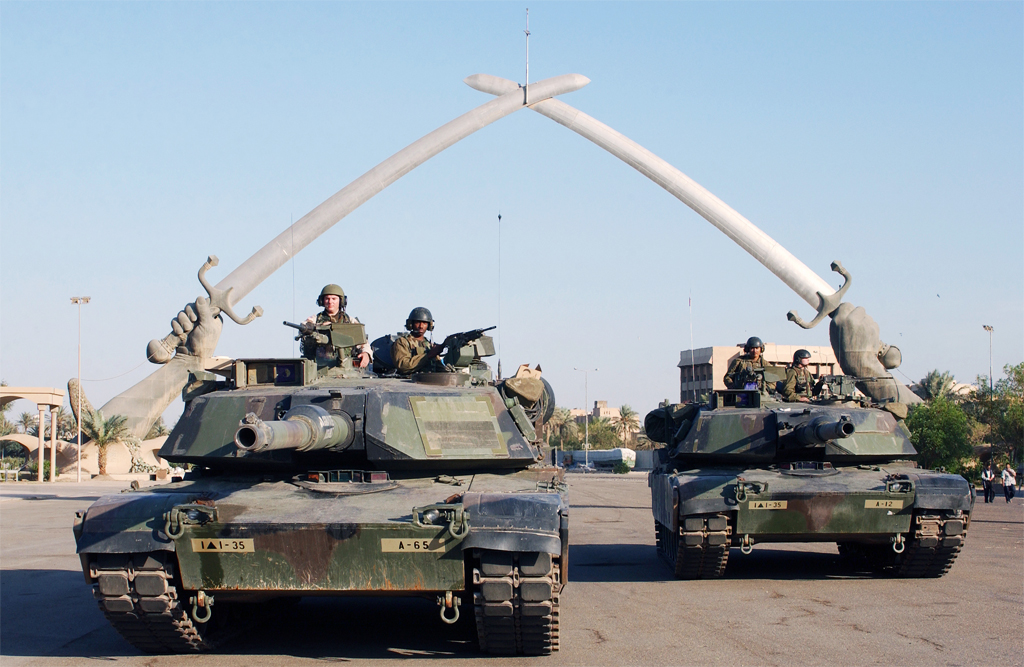
U.S. troops capture Baghdad on April 07, 2003 (Saddam Hussein's regime falls two days later)
U.S. troops capture Baghdad: Iraq War, also called Second Persian Gulf War (2003–11).
On April 7th, the day of the second “Thunder Run”, the 3d Infantry Division reported that it controlled a zone from the international airport to one of Saddam's palaces, with armor at all the main intersections in between, but planned to pull back to the airport. Soon the plan changed; the troopers believed they could hold their ground in downtown Baghdad.
Among the sites in the 7th Marines area of operations was Firdos Square in downtown Baghdad. It was dominated by a six-meter-high statue of Saddam Hussein with his right arm raised in a heroic gesture. The 3d Battalion, 4th Marines, rolled into the square late in the day on 9 April. A crowd quickly gathered.
An Army psychological operations team attached to the Marines arrived and announced over a loudspeaker in Arabic that the Marines had decided the statue should come down. Millions around the world were able to watch the events in real time on Cable News Network and other television networks.
A Marine named Corporal Edward Chin, of Company B, 1st Tank Battalion, climbed onto a derrick that extended from his M88 tank retriever. He reached up and placed an American flag over Saddam's face.
Some of the Iraqis said, “No, we want an Iraqi flag”, and within one or two minutes, Chin took the flag down and replaced it with an Iraqi flag. Next a stout rope was fitted around the statue, and then to a cable on the tank retriever. When the tank retriever pulled, the statue came down, slowly, as the metal bent and Saddam slipped off the pedestal.
The crowd rushed forward, swarming over the fallen statue. One group of Iraqis dragged its head to an unknown but no doubt unpleasant fate.
Marines.mil / Wikipedia / Encyclopedia Britannica / The Guardian
/ U.S. troops capture Baghdad on April 07, 2003 (Saddam Hussein's regime falls two days later) (YouTube) 
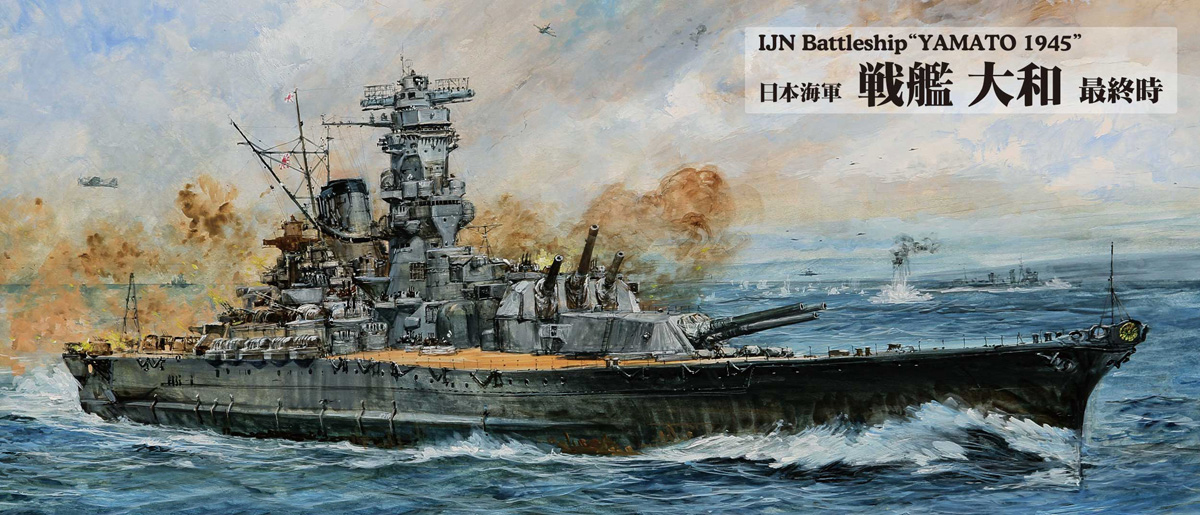
World War II: Japanese battleship Yamato is sunk by Allied forces on April 07, 1945
World War II: Japanese battleship Yamato is sunk by Allied forcesd: On this day in 1945, the Japanese battleship Yamato, ostensibly the greatest battleship in the world, is sunk in Japan’s first major counteroffensive in the struggle for Okinawa.
Launched in 1942 alongside its sister ship, the Yamato, the Musashi became the flagship of the main fleet of the Imperial Japanese Navy the following year. The two ships were among the largest and most powerful ever built, measuring 862 feet (263 meters) long and weighing in at 73,000 tons. Their maximum height reached some 183 feet (56 meters), about the height of a 16-story building. Armed with 56-centimeter main guns - the largest and most powerful of any warship—the Yamato and Musashi were designed to help Japan combat the much larger naval force of the United States during World War II.
Though the Japanese seemed initially reluctant to put their flagships in harm’s way, the loss of other major battleships in the Battle of Midway (1942) and the Battle of the Philippine Sea (1944) changed their minds. On October 24, 1944, the Musashi came under heavy fire from U.S. forces in the Battle of Leyte Gulf, the clash that followed the Allied landing in the Philippine Islands. Despite its massive size, the Musashi lacked sufficient aerial protection in the battle, and proved vulnerable to enemy torpedoes. After it caught fire and began to lose propeller power, U.S. warplanes zoomed in to finish the job. The Musashi sustained some 25 direct torpedo hits over more than four hours. More than 1,000 members of the ship’s crew were killed, including the captain, while Japanese ships were able to rescue some 1,300 others.
History Channel / Wikipedia / Encyclopedia Britannica / NAVY.mil
/ World War II: Japanese battleship Yamato is sunk by Allied forces on April 07, 1945 (YouTube) 
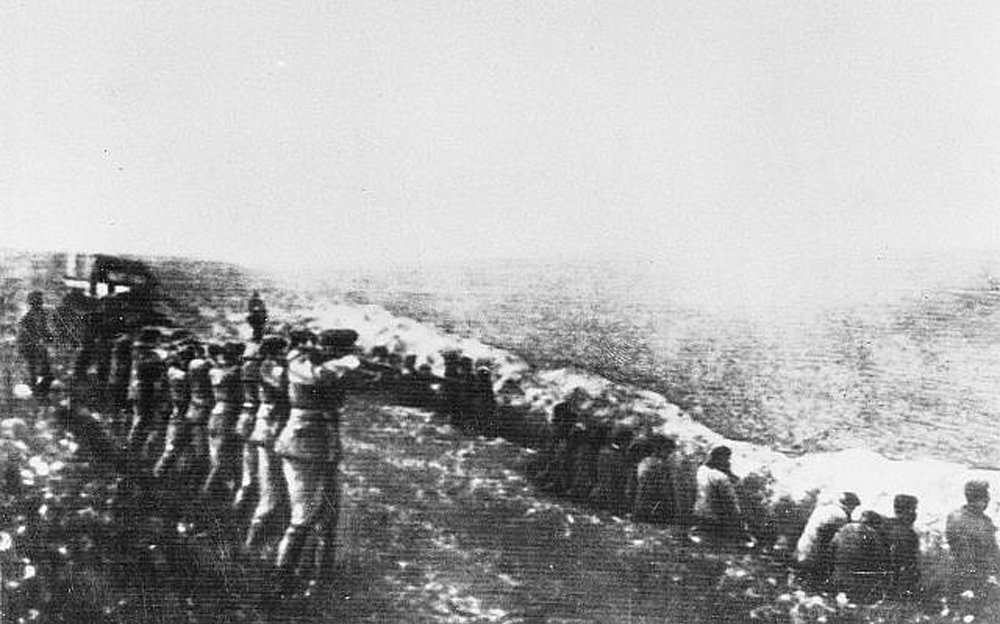
World War II: The Holocaust in Ukraine: 1,100 Jews are shot and buried in ditches on April 07, 1943
World War II: The Holocaust in Ukraine: 1,100 Jews are shot and buried in ditches: On April 07, 1943 in Terebovlia, Germans order 1,100 Jews to undress and march through the city to the nearby village of Plebanivka, where they are shot and buried in ditches.
One of the most horrific terms in history was used by Nazi Germany to designate human beings whose lives were unimportant, or those who should be killed outright: Lebensunwertes Leben, or “life unworthy of life”. The phrase was applied to the mentally impaired and later to the “racially inferior”, or “sexually deviant”, as well as to “enemies of the state” both internal and external.
From very early in the war, part of Nazi policy was to murder civilians en masse, especially targeting Jews. Later in the war, this policy grew into Hitler's "final solution", the complete extermination of the Jews. It began with Einsatzgruppen death squads in the East, which killed some 1,000,000 people in numerous massacres, and continued in concentration camps where prisoners were actively denied proper food and health care.
It culminated in the construction of extermination camps - government facilities whose entire purpose was the systematic murder and disposal of massive numbers of people. In 1945, as advancing Allied troops began discovering these camps, they found the results of these policies: hundreds of thousands of starving and sick prisoners locked in with thousands of dead bodies.
They encountered evidence of gas chambers and high-volume crematoriums, as well as thousands of mass graves, documentation of awful medical experimentation, and much more. The Nazis killed more than 10 million people in this manner, including 6 million Jews.
The Atlantic / Wikipedia / Encyclopedia Britannica / Daily Mail UK / USHMM.org
/ World War II: The Holocaust in Ukraine: 1,100 Jews are shot and buried in ditches (YouTube) 
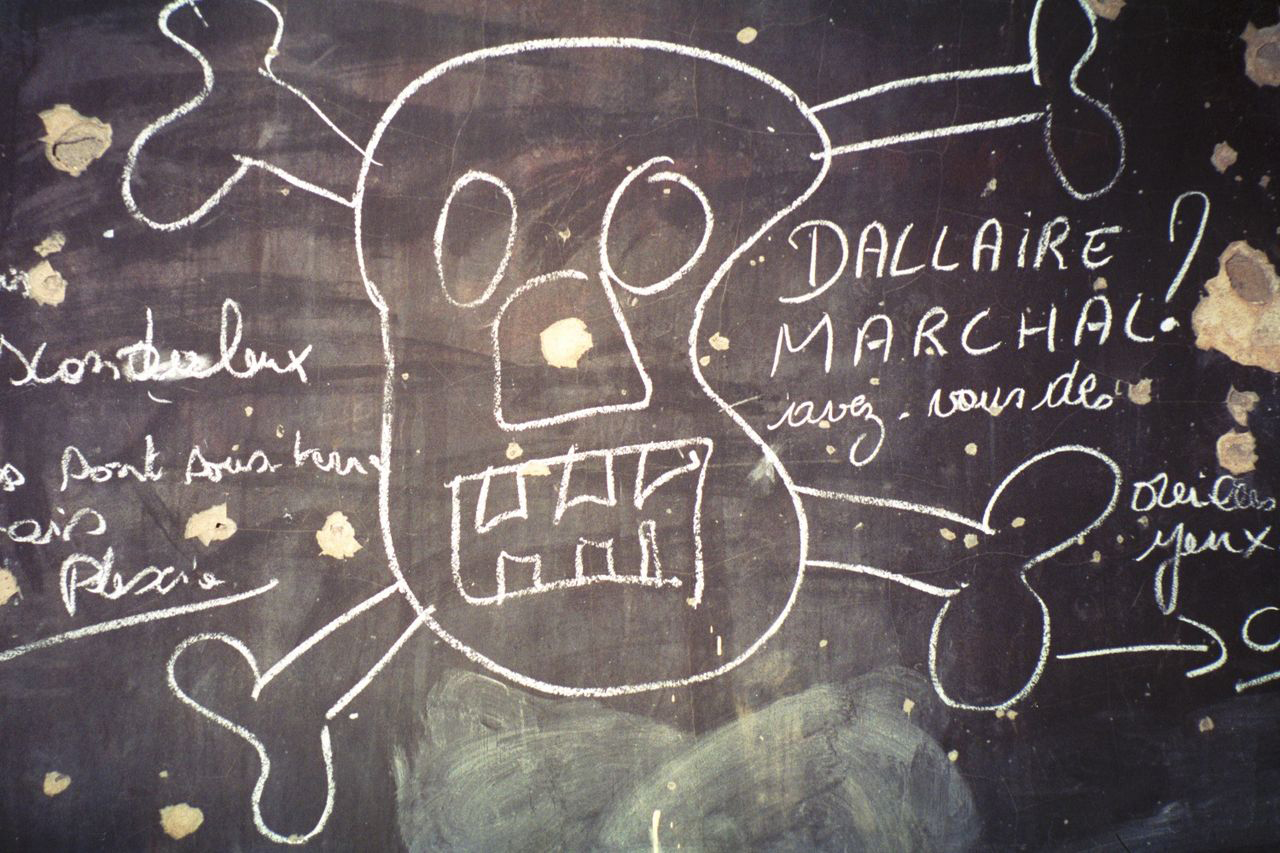
The Rwandan genocide on April 07, 1994
The Rwandan genocide: Rwandan armed forces kill 10 Belgian peacekeeping officers in a successful effort to discourage international intervention in their genocide that had begun only hours earlier. In less than three months, Hutu extremists who controlled Rwanda murdered an estimated 800,000 innocent civilian Tutsis in the worst episode of genocide since World War II. The Tutsis, a minority group that made up about 10 percent of Rwanda’s population, received no assistance from the international community, although the United Nations later conceded that a mere 5,000 soldiers deployed at the outset would have stopped the wholesale slaughter.
The immediate roots of the 1994 genocide went back a few years. In the early 1990s, President Juvenal Habyarimana, a Hutu, began using anti-Tutsi rhetoric to consolidate his own power among the Hutus. Beginning in October 1990, there were several massacres of hundreds of Tutsis. Although the two ethnic groups were very similar, sharing the same language and culture for centuries, the law required registration based on ethnicity. The government and army began to assemble the Interahamwe (meaning “those who attack together” or “those who stand together”) and prepared for the elimination of the Tutsis by arming Hutus with guns and machetes. In January 1994, the United Nations forces in Rwanda warned that larger massacres were imminent.
On April 6, 1994, President Habyarimana’s plane was shot down, killing him and several of his close advisers. It is believed that the attack was carried out by Hutu extremists who believed the president was about to sign the Arusha peace accords, not the Rwandan Patriotic Front (RPF), a Tutsi military organization stationed outside the country at the time, who the Hutus blamed. In any event, Hutu extremists in the military, led by Colonel Bagosora, immediately went into action, murdering Tutsis and moderate Hutus within hours of the plane crash.
The Belgian peacekeepers were killed the following day, a key factor in the withdrawal of U.N. forces from Rwanda. Within days, the radio stations in Rwanda were broadcasting appeals to the Hutu majority to kill all Tutsis in the country. The army and the national police directed the slaughter, sometimes threatening Hutu civilians when persuasion didn’t work. Thousands of innocent people were hacked to death with machetes by their neighbors. Despite the horrific crimes, the international community, especially the United States, hesitated to take any action. They wrongly ascribed the genocide to chaos amid tribal war.
It was left to the RPF to begin an ultimately successful military campaign for control of Rwanda. By the summer, the RPF had defeated the Hutu forces and driven them out of the country and into several neighboring nations. However, by that time, 75 percent of the Tutsis living in Rwanda had been murdered.
History Channel / Wikipedia / Encyclopedia Britannica / End Genocide.org / United Nations (UN) / BBC
/ The Rwandan genocide on April 07, 1994 (YouTube) 
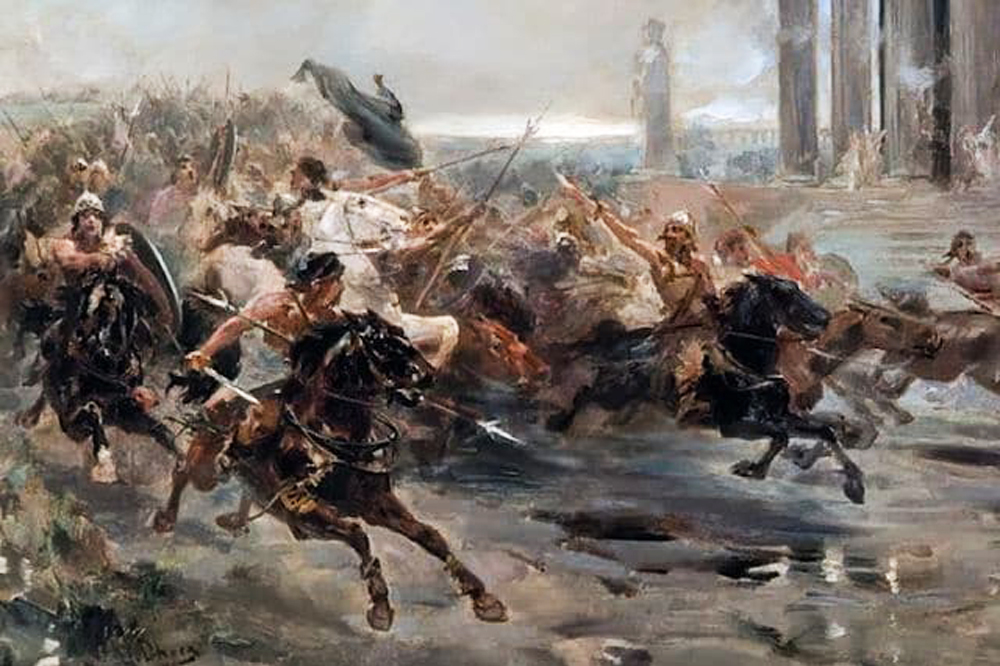
Attila the Hun sacks the town of Metz and attacks other cities in Gaul on April 07, 451
Atila the Hun sacks the town of Metz and attacks other cities in Gaul: Attila the Hun, who reigned 434-453 CE, captured and plundered the city of Metz - the Roman's stronghold. Without any opposition, he massacred the citizens, and then continued his new attacks on other cities in Gaul, which is today known as France.
Metz was first heard of about 1,200 BC. Later it became the major city of Roman Gaul and a well-fortified town perfectly located at the junction of several important military roads.
During his reign, Attila (“Little Father”) was the leader of the nomadic people known as the Huns and ruler of the Hunnic Empire.
Attila was one of the most feared enemies of the Western and Eastern Roman Empires. His name was synonymous with terror among his enemies and the general populace of the territories that his armies swept through. Attila's incursions into the regions of Germania drove the populations across the borders of the Western Roman Empire and contributed to its decline in the late 5th century CE.
He was finally met in a battle by the combined forces of the Romans under Flavius Aetius, who understood Hun strategy and tactics, and the Visigoths under Theodoric I (reigned 418-451 CE) on the Cataluanian Plains.
This engagement is known as the Battle of Cataluanian Fields or the Battle of Chalons and has been described as one of the bloodiest military conflicts in history and for the first time Attila's forces were halted in an invasion of Europe.
Although Attila had been stopped in his invasion, he had hardly been defeated.
Ancient Pages / Wikipedia / Encyclopedia Britannica /Ancient.eu
/ Attila the Hun sacks the town of Metz and attacks other cities in Gaul on April 07, 451 (YouTube) 
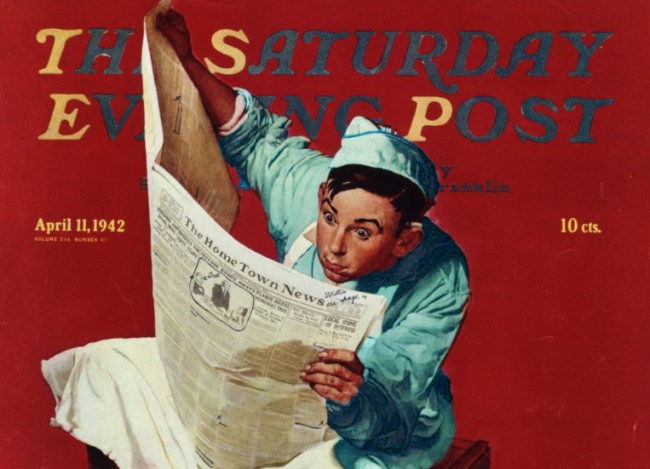
Understanding Military Terminology - Multinational
(DOD) Between two or more forces or agencies of two or more nations or coalition partners. See also alliance; coalition.
Joint Publications (JP 5-0) Joint Planning - Joint Chiefs of Staff
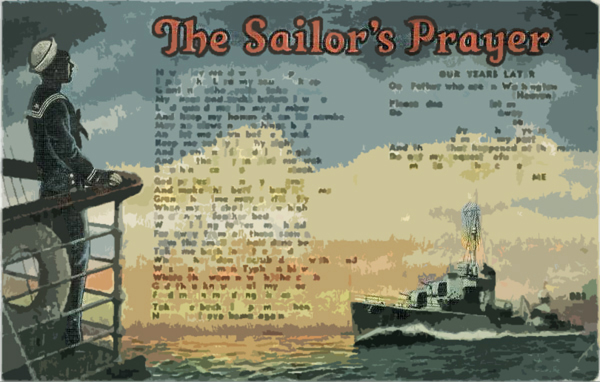
The Old Salt’s Corner
“A Sailors Prayer”
*** Four Years Later ***
Our Father who art in Washington
Please, dear Father, let me stay,
Do not drive me now away.
Wipe away my scalding tears,
And let me stay my thirty years
Please forgive me all my past
And things that happened at the mast,
Do not my request refuse,
And let me stay another cruise.
~ Amen
~ Author unknown
(continued from previous week)

“I’m Just Sayin”
“History is the version of past events
that people have decided to agree upon.”
“The world suffers a lot.
Not because of the violence of bad people,
But because of the silence of good people!”
“Religion is what keeps the poor
from murdering the rich.”
~ Napoleon Bonaparte

“Thought for the Day”
“Every problem or difficulty you face
contains the seed of an equal
or greater advantage or benefit.”
“There are no limitations to the mind
except those we acknowledge.”
“More gold has been mined
from the thoughts of men
than has been taken from the earth.”
~ Napoleon Hill

“What I Learned”
“Life may be hard,
but the alternative is unacceptable.”
“Logic is the art of going wrong with confidence.”
“Keep your mouth shut and your eyes open.”
~ Anonymous
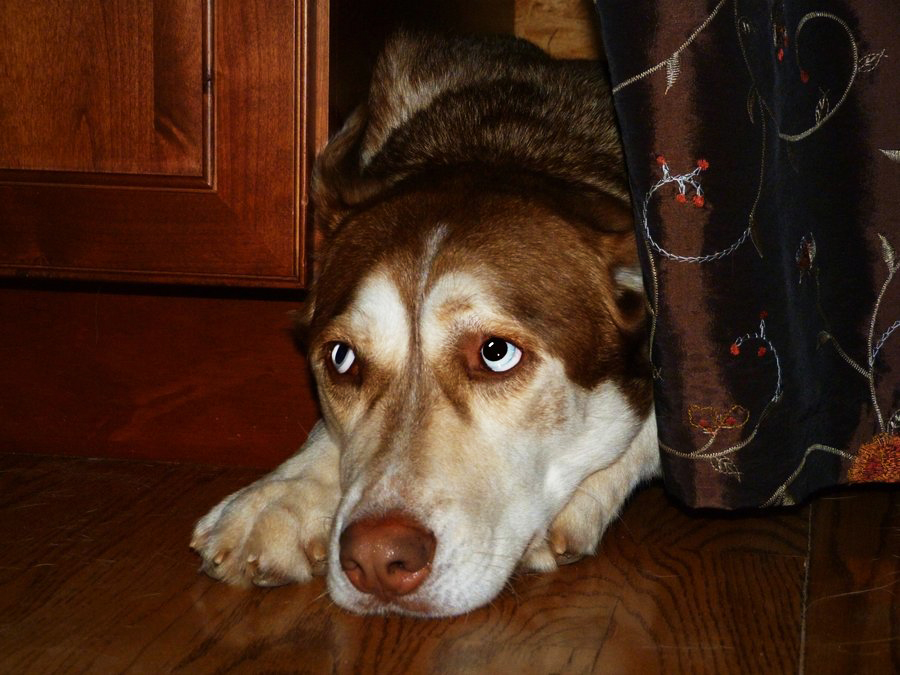
Mr. Answer Man Please Tell Us: Why Do Dogs Like to Hide Under Beds?
As you begin to wake up from your sleep, you hear movement underneath your bed. From the shuffling to the breathing, you wonder what it could be. At first, you think it may be a rat or something of that nature, but as the breathing gets louder, you realize it is just your dog. It seems as if she slept underneath your bed. When you try to get her to come out, she does not want to leave her small space that sits underneath your mattress. Understanding why your dog hides in small spaces can help you better care for her in times of need.

The Root of the Behavior
You have probably found your dog underneath your bed on multiple occasions. Whether she is sleeping, relaxing, or hiding, it is a place that brings her comfort. Yet, you must be wondering why your dog loves to hide in the small cavity under your bed. The most common reason for this is the comfort. Dogs love small spaces because they feel contained, which is enjoyable for relaxation. They may also enjoy the temperature that is created in that small space as well as the fresh carpet. If this is the case with your dog, there should not be any reason to worry.
Your dog is just trying to find their comfortable spot for relaxation in your house. Yet, there are other reasons that your dog may be under your bed. Your dog will always want to feel safe and sometimes, underneath the bed is the safest place for them. If there is chaos in your house of any kind, your dog may go under the bed to find peace and safety. If your house is not filled with chaos, it is best to make sure your dog is not physically in pain or ill. Sometimes, dogs will hide under beds and use that space as a safe sanctuary while they are dealing with body aches.
It is a part of their canine nature. Beyond these few reasons, anxiety and fear are two other reasons for this behavior in your dog. Anxiety and fear can come from loud noises such as thunderstorms as well as stressful situations that are surrounding your dog. The small space underneath your bed gives them a place of comfort and serenity where they will not be found. This can help ease their anxiety and fear when it comes about, and the bed can separate them from any chaotic noise or stress that is occurring in their home life.
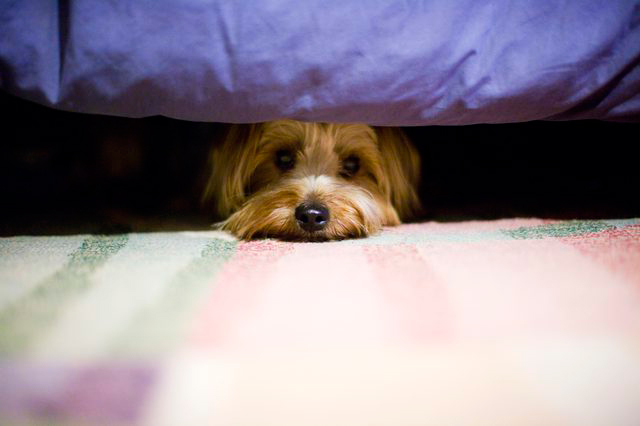
Encouraging the Behavior
If your dog is hiding under the bed often, you may need to try to figure out why they are behaving that way. If it is for comfort and safety, there may not be much to worry about. Yet, if it is because of something a bit more serious, such as illness or anxiety, you may need to help your dog adjust and heal. Overall, it is wise to encourage your dog not to continuously hide under the bed. You want to make sure your dog feels safe, comfortable, and loved in their everyday life. Most times, hiding in small spaces can be a way for your dog to escape their regular day-to-day life.
Once you figure out why your dog is hiding under the bed, it is best to create a safe environment and change what is needed for their own comfort and safety. If your dog likes to sleep under your bed or relax there once in a while, there is no harm in that. Yet, it is very important to make sure your dog does not make hiding under the bed a regular habit or coping mechanism for any issues they are dealing with. As owners, we want our dogs happy all of the time.

Other Solutions and Considerations
If you notice that your dog likes being in contained spaces that are dark, you can create a space for your dog like that. A simple suggestion would be to create a safe space that is near you in the house just for them such as a crate or kennel covered with a blanket. This can help your dog feel safe, comforted, and loved in their home. If you notice that this behavior is due to illness, fear, or anxiety, you may want to evaluate the environment your dog is in. From here, you can alter it for the best interest of your dog. If this does not seem to work, you may want to have your dog checked with the veterinarian to make sure their health is in good condition.
Conclusion
Canines are sensitive and empathetic creatures and it is our job as their owners to ensure they have a wonderful life. If your dog loves to spend time under the bed, there is no harm in that. Just make sure your dog is not avoiding their life outside of their secret spot under your bed for some reason.
Mental Floss
• Quora
• Wikipedia
• Why Do Dogs Like to Hide Under Beds? (YouTube Search) 

NAVSPEAK aka U.S. Navy Slang
Channel Fever: Anxiousness, felt when approaching port, to get leave. It is sometimes cured by a "Channel Fever Shot," a slap or kick to the backside.
Chaps: Chaplain.
Checks Five-Oh: Excellent, in proper working order. Things can also be repaired and gotten into proper working order and then referred to as “checks five-oh”. Derives from the 5-point evaluation system used in the navy, in which a score of five is given to individuals who perform exceptionally well.
Check Valve: A person who “does for himself or herself, but not others”. None of the goodies get past that person. Similar to a real check valve which only allows fluid to go one way.
Chem Wipe: Also known as Kim-Wipes, though they bare no resemblance to the far more delicate Kimberly-Clark product. These are heavy duty paper towels purchased in bulk, and are used in every cleaning situation imaginable.
CHENG: Chief Engineer. (Pronounced much like Chang and used as the officer's name.)
Chicken Switches (Submarine Service): ASwitches in the overhead above the Dive Officer's station that release 4500 lb air into the main ballast tank, initiating the Emergency Main Ballast Tank blow (EMBT blow) causing the tanks to fill with air and the submarine to rise to the surface in a real hurry. Sometimes, engineering drills may cause the sub to go near test depth (the depth the submarine has been tested to); this may be caused by a delay in recovering the reactor, or many other reasons. If the Dive Officer (or whoever has the Con) blows the tanks, they were “chicken” - afraid of sinking.
Chief: Title given to enlisted personnel who have achieved the rank of E-7 and who have completed their transitional training and indoc.
Chilly Willy: USS Curtis Wilbur DDG-54.
Chit: The document a sailor fills out to make various types of special request (i.e. for emergency leave, or to move off base to civilian housing). A “My Wife Chit” is a special request that uses one's wife as an excuse/justification for needing to be absent.
Chit Chipper: Paper Shredder. So named because one can't do anything without a chit, especially one that is “lost in routing”.
CHT Tank/Shit Tank/Chit Tank: Collection, Holding and Transfer system, which collects all ship's shower and toilet runoff/sewage until such time as it can be pumped or dumped.
Chokers: Service Dress White Uniform worn by Officers and Chiefs.
Chop: Supply Officer. Taken from the Supply Corps' porkchop-shaped insignia. (Submarine).
Chow: Food.
Chow Boss: Food Service Officer.
Chow down: Eat.
Chow Hall: Dining room.
Chowdale: An airwing member who spend all their time in line for chow, holding up others who actually have things to do.
Chub Club: The mandatory physical training to which sailors are assigned if they are overweight.
Chuckie V: The USS Carl Vinson.
Chuck Wagon: (Yet another name for) the USS Carl Vinson.
ChuHai: A Japanese alcoholic beverage made by mixing sake and the equivalent of Kool-Aid. Can be bought in most Japanese convenience stores or at a ChuHai stand in the Honch.
ChuHai Stand: One of two standing-room only drinking establishments in the Honch. Named for the affordable alcoholic beverage it sells to junior sailors and contractors, ChuHai.

Just for you MARINE
CAX: Combined Arms eXercise. Outdated term, it has since been replaced by the ITX (Integrated Training eXercise).
CBRN: Chemical, Biological, Radiological, and Nuclear. See also NBC.
CCU: Correctional Custody Unit, a hard-labor and heavy discipline unit overseen by MPs or Navy Masters-at-Arms to which Marines and Sailors found guilty of minor UCMJ offenses through NJP are sent for up to 30 days in lieu of confinement in the brig.
Chairborne or Chairborne Ranger: Someone who works in an office environment, a play on airborne.
Charlies or Chucks: The service “C” uniform, consisting of the short-sleeve khaki shirt and green trousers.
Chaser: Pejorative for a Marine assigned prisoner escort duties, an escort for a single prisoner or detail of prisoners.
Check Fire: Order to stop firing due to a safety condition, possible error or mistarget.
Chest Candy : Used in reference to the ribbons and medals on a Marine's uniform.
Chevron: Symbols of enlisted ranks above private, usually not acceptably called “stripes” unless describing the rank insignia itself.
China Marines: Those United States Marines from the 4th Marine Regiment who were stationed in Shanghai, China during 1927–1941.
Chinese Field Day: A form of field day where every item from a room is removed for cleaning; when tending to last much longer than necessary, it is used as a punishment, typically for unsatisfactory performance in routine field day.
Chit: Voucher receipt, letter, or note, entitling the bearer to special treatment, such as medical restrictions from duty; derived from Hindi word for “letter”, “chitti”.

Naval Aviation Squadron Nicknames
Fleet Logistics Support Squadron 30 (VRC-30) - nicknamed the “Providers”
United States Navy - Naval Air Station North Island, San Diego, California / Coronado, California - Established June 24, 1943.

Where Did That Saying Come From?
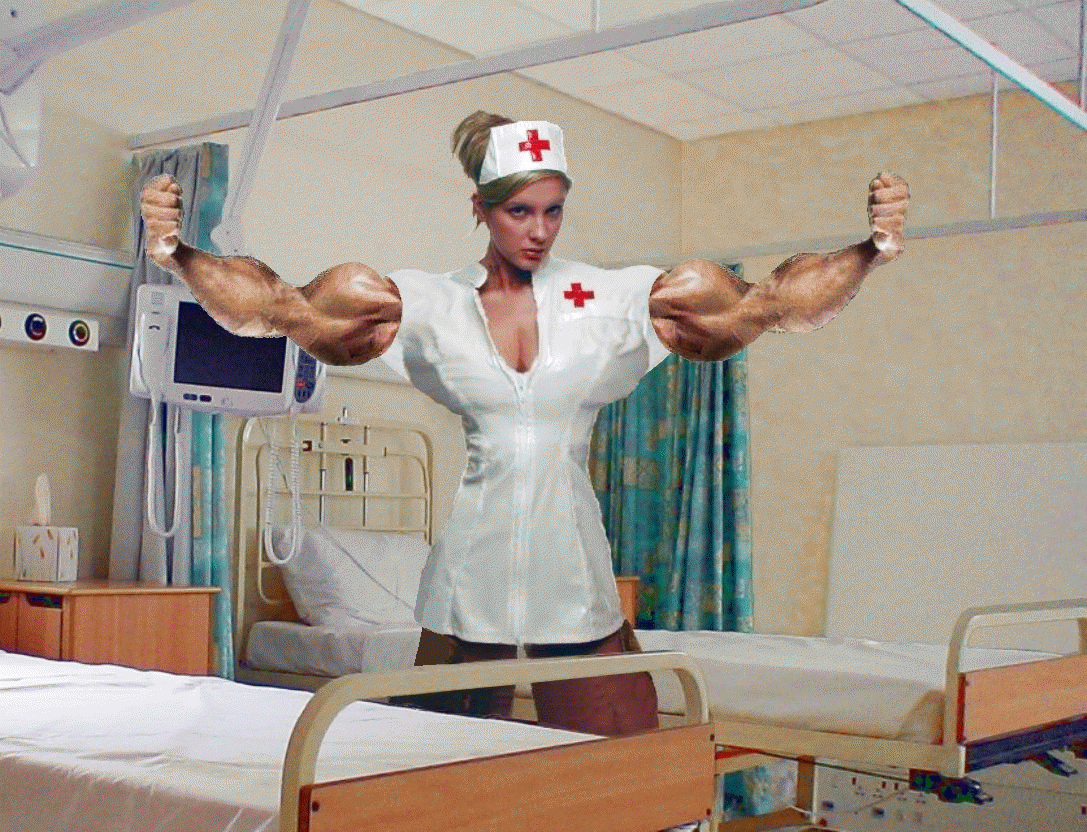
“In the buff:” Meaning: Naked.
History: A buff-coat was a light leather tunic which was worn by English soldiers up until the 17th century. The original meaning of 'in the buff' was simply to be wearing such a coat. Shakespeare makes reference to this in The Comedy of Errors, 1590 - employing a play on two meanings of the word suit, that is, a suit (of clothes) and suit (authorization):
“ADRIANA: What, is he arrested? Tell me at whose suit.
DROMIO OF SYRACUSE: I know not at whose suit he is arrested well;
But he's in a suit of buff which 'rested him, that can I tell.”
The later meaning of in the buff meaning naked is an allusion to the colour of the skin, which is somewhat like the colour buff (a light browny yellow). This was first recorded by Thomas Dekker, in his work Satiro-mastix or the untrussing of the humorous poet, 1602. In this he likens 'in buff' to 'in stag', which was a commonly used term for naked in the 17th century.
“No, come my little Cub, doe not scorne mee because I goe in Stag, in Buffe, heer's veluet too.”
Phrases.org UK

Science & Technology
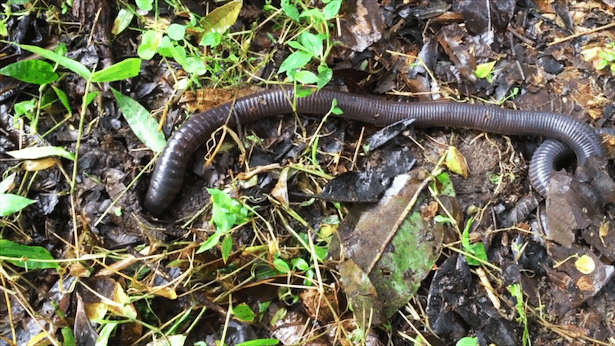
Collecting clean water from air, inspired by desert life
• Controlling neurons with light - but without wires or batteries
• Researchers develop self-powered microfluidic sheet that wraps, flaps and creeps
• This is what happens when layered materials are pushed to the brink
• Unmuting large silent genes lets bacteria produce new molecules, potential drug candidates
• Scientists: 'Time is ripe' to use big data for planet-sized plant questions
• NASA: Icy object past Pluto looks like reddish snowman
Phys.org / MedicalXpress / TechXplore

Bizarre News (we couldn’t make up stuff this good – real news story)

What a Tiny Electron Reveals About the Structure of the Universe
What is the shape of an electron? If you recall pictures from your high school science books, the answer seems quite clear: an electron is a small ball of negative charge that is smaller than an atom. This, however, is quite far from the truth.
The electron is commonly known as one of the main components of atoms making up the world around us. It is the electrons surrounding the nucleus of every atom that determine how chemical reactions proceed. Their uses in industry are abundant: from electronics and welding to imaging and advanced particle accelerators. Recently, however, a physics experiment called Advanced Cold Molecule Electron EDM (ACME) put an electron on the center stage of scientific inquiry. The question that the ACME collaboration tried to address was deceptively simple: What is the shape of an electron?
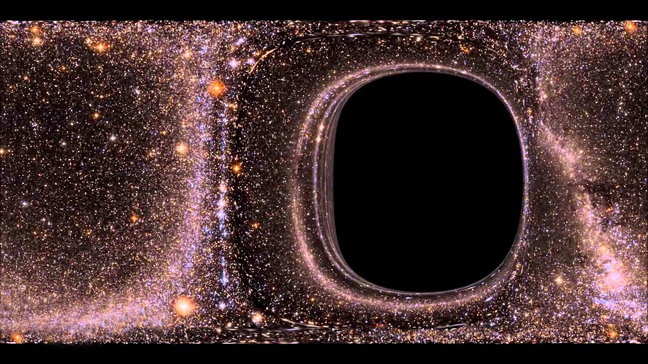
Classical and quantum shapes?
As far as physicists currently know, electrons have no internal structure — and thus no shape in the classical meaning of this word. In the modern language of particle physics, which tackles the behavior of objects smaller than an atomic nucleus, the fundamental blocks of matter are continuous fluid-like substances known as "quantum fields" that permeate the whole space around us. In this language, an electron is perceived as a quantum, or a particle, of the "electron field." Knowing this, does it even make sense to talk about an electron's shape if we cannot see it directly in a microscope — or any other optical device for that matter?
To answer this question we must adapt our definition of shape so it can be used at incredibly small distances, or in other words, in the realm of quantum physics. Seeing different shapes in our macroscopic world really means detecting, with our eyes, the rays of light bouncing off different objects around us.
Simply put, we define shapes by seeing how objects react when we shine light onto them. While this might be a weird way to think about the shapes, it becomes very useful in the subatomic world of quantum particles. It gives us a way to define an electron's properties such that they mimic how we describe shapes in the classical world.
What replaces the concept of shape in the micro world? Since light is nothing but a combination of oscillating electric and magnetic fields, it would be useful to define quantum properties of an electron that carry information about how it responds to applied electric and magnetic fields. Let's do that.

Electrons in electric and magnetic fields
As an example, consider the simplest property of an electron: its electric charge. It describes the force — and ultimately, the acceleration the electron would experience — if placed in some external electric field. A similar reaction would be expected from a negatively charged marble — hence the "charged ball" analogy of an electron that is in elementary physics books. This property of an electron — its charge — survives in the quantum world.
Likewise, another "surviving" property of an electron is called the magnetic dipole moment. It tells us how an electron would react to a magnetic field. In this respect, an electron behaves just like a tiny bar magnet, trying to orient itself along the direction of the magnetic field. While it is important to remember not to take those analogies too far, they do help us see why physicists are interested in measuring those quantum properties as accurately as possible.
What quantum property describes the electron's shape? There are, in fact, several of them. The simplest — and the most useful for physicists — is the one called the electric dipole moment, or EDM.
In classical physics, EDM arises when there is a spatial separation of charges. An electrically charged sphere, which has no separation of charges, has an EDM of zero. But imagine a dumbbell whose weights are oppositely charged, with one side positive and the other negative. In the macroscopic world, this dumbbell would have a non-zero electric dipole moment. If the shape of an object reflects the distribution of its electric charge, it would also imply that the object's shape would have to be different from spherical. Thus, naively, the EDM would quantify the "dumbbellness" of a macroscopic object.

Electric dipole moment in the quantum world
The story of EDM, however, is very different in the quantum world. There the vacuum around an electron is not empty and still. Rather it is populated by various subatomic particles zapping into virtual existence for short periods of time.
These virtual particles form a "cloud" around an electron. If we shine light onto the electron, some of the light could bounce off the virtual particles in the cloud instead of the electron itself.
This would change the numerical values of the electron's charge and magnetic and electric dipole moments. Performing very accurate measurements of those quantum properties would tell us how these elusive virtual particles behave when they interact with the electron and if they alter the electron's EDM.
Most intriguing, among those virtual particles there could be new, unknown species of particles that we have not yet encountered. To see their effect on the electron's electric dipole moment, we need to compare the result of the measurement to theoretical predictions of the size of the EDM calculated in the currently accepted theory of the Universe, the Standard Model.
So far, the Standard Model accurately described all laboratory measurements that have ever been performed. Yet, it is unable to address many of the most fundamental questions, such as why matter dominates over antimatter throughout the universe. The Standard Model makes a prediction for the electron's EDM too: it requires it to be so small that ACME would have had no chance of measuring it. But what would have happened if ACME actually detected a non-zero value for the electric dipole moment of the electron?
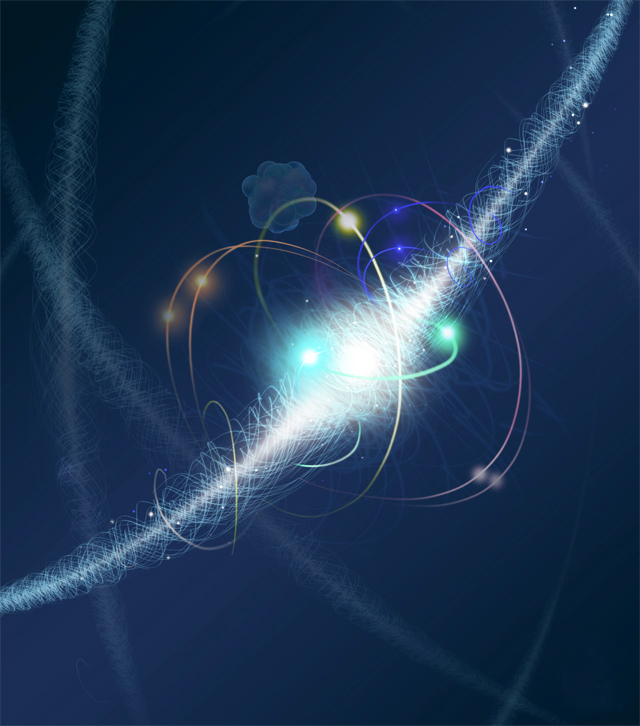
Patching the holes in the Standard Model
Theoretical models have been proposed that fix shortcomings of the Standard Model, predicting the existence of new heavy particles. These models may fill in the gaps in our understanding of the universe. To verify such models we need to prove the existence of those new heavy particles. This could be done through large experiments, such as those at the international Large Hadron Collider (LHC) by directly producing new particles in high-energy collisions.
Alternatively, we could see how those new particles alter the charge distribution in the "cloud" and their effect on electron's EDM. Thus, unambiguous observation of electron's dipole moment in ACME experiment would prove that new particles are in fact present. That was the goal of the ACME experiment.
This is the reason why a recent article in Nature about the electron caught my attention. Theorists like myself use the results of the measurements of electron's EDM — along with other measurements of properties of other elementary particles — to help to identify the new particles and make predictions of how they can be better studied. This is done to clarify the role of such particles in our current understanding of the universe.
What should be done to measure the electric dipole moment? We need to find a source of very strong electric field to test an electron's reaction. One possible source of such fields can be found inside molecules such as thorium monoxide. This is the molecule that ACME used in their experiment. Shining carefully tuned lasers at these molecules, a reading of an electron's electric dipole moment could be obtained, provided it is not too small.
However, as it turned out, it is. Physicists of the ACME collaboration did not observe the electric dipole moment of an electron — which suggests that its value is too small for their experimental apparatus to detect. This fact has important implications for our understanding of what we could expect from the Large Hadron Collider experiments in the future.
nterestingly, the fact that the ACME collaboration did not observe an EDM actually rules out the existence of heavy new particles that could have been easiest to detect at the LHC. This is a remarkable result for a tabletop-sized experiment that affects both how we would plan direct searches for new particles at the giant Large Hadron Collider, and how we construct theories that describe nature. It is quite amazing that studying something as small as an electron could tell us a lot about the universe.
Live Science (01/02/2019) 


SONG FACTS
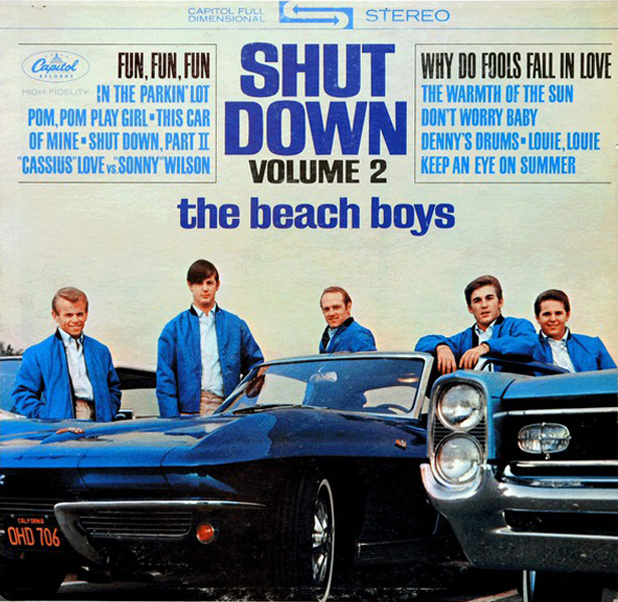
“Don't Worry Baby” - The Beach Boys
Album: Shut Down, Vol. 2
Released 1964 
This was conceived as a followup to the Ronettes' #2 hit “Be My Baby”  . When he heard the Ronettes' song on the radio, Brian Wilson wondered aloud if he could match it. Wilson's wife Marilyn reassured him, saying, “Don't worry, baby”. Wilson remembered it when it came time to write songs with his DJ friend Roger Christian.
. When he heard the Ronettes' song on the radio, Brian Wilson wondered aloud if he could match it. Wilson's wife Marilyn reassured him, saying, “Don't worry, baby”. Wilson remembered it when it came time to write songs with his DJ friend Roger Christian.
Brian Wilson told Goldmine in 2011 regarding this track: “I wrote that with Roger Christian and it took me two days to write it. I started out with the verse idea and then wrote the chorus. It was a very simple and beautiful song. It's a really heart and soul song, I really did feel that in my heart. Some say it's about a car and others say it's about a girl, who's right? It's both. It's about a car and a woman.”
Philip Lambert, author of Inside The Music of Brian Wilson, said of the similarities between this song and “Be My Baby”  : “They're in the same key - E Major - and they start the same. The phrase structure is the same, the chord progressions are almost the same, the melodies are almost the same.” Lambert points out that the key change in this song is an unexpected touch that helps make the song memorable. The drums at the beginning are the same rhythm as “Be My Baby”
: “They're in the same key - E Major - and they start the same. The phrase structure is the same, the chord progressions are almost the same, the melodies are almost the same.” Lambert points out that the key change in this song is an unexpected touch that helps make the song memorable. The drums at the beginning are the same rhythm as “Be My Baby”  .
.
This song was recorded in two 8-hour sessions. Brian Wilson often used the famous Los Angeles session musicians on his songs, but this one was mostly in the family: Brian played piano and bass, Carl Wilson played guitar, and Dennis Wilson played the drums.
The Beach Boys used as the B-side of their hit, “I Get Around”  .
.
Al Jardine told Mojo magazine June 2012 that this was his favorite Beach Boys recording session. He recalled: “(Engineer) Chuck Britz got such a great sound on that song; the drums, the singing, the clicky sound on the Fender Precision bass. There's something about the way the track sat. Just about everything about it was an era-change for us.”
The Beach Boys, official website / Billboard / All Music / Song Facts / Ultimate Classic Rock / The Beach Boys
Image: “Shut Down, Vol. 2 (album)” by The Beach Boys
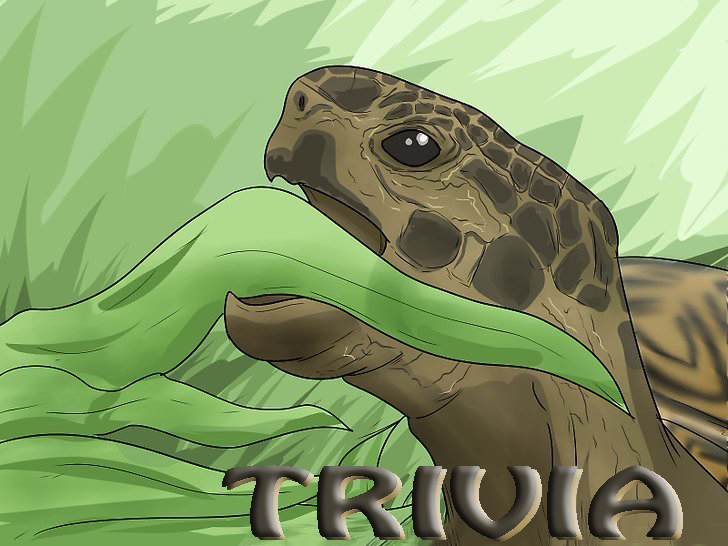
Trivia
● What's the difference between a turtle and a tortoise?
Answer to Trivia
● After water, what are the next two most widely consumed beverages in the world?
Answer to Trivia
● What three similar common words can be defined as plural, destination, and also?
Answer to Trivia
● A group of 78 friends formed a “human pyramid” on the beach. One line of people formed the bottom row, and each row above contained one fewer person. How many people formed the bottom row?
Answer to Trivia

A Test for People Who Know Everything
From the Jeopardy Archives Category - “SIMILAR WORDS” ($200)
“To do squats & jumping jacks, & to drive out an evil spirit.”
● Answer for People Who Do Not Know Everything, or Want to Verify Their Answer Vocabulary
From the Jeopardy Archives Category - “SIMILAR WORDS” (DD: $600)
“Quit your job, or stay on & put your John Hancock on a new contract.”
● Answer for People Who Do Not Know Everything, or Want to Verify Their Answer Grammar
From the Jeopardy Archives Category - “SIMILAR WORDS” ($1,000)
“Help settle a dispute, then add a letter & quietly reflect on it.”
● Answer for People Who Do Not Know Everything, or Want to Verify Their Answer American Bar Association
Answer to Last Week's Test
From the Jeopardy Archives Category - “OH MY GODS!” ($200)
“Roman emperor Augustus claimed descent from this Olympian & sun god.”
● Answer: “Apollo”. Encyclopedia Britannica
From the Jeopardy Archives Category - “OH MY GODS!” (DD: $600)
“This Roman god has his own fountain in Madrid.”
● Answer: Neptune. Encyclopedia Britannica
From the Jeopardy Archives Category - “OH MY GODS!” ($1,000)
“This god of fire & patron of craftsmen was really lame... really.”
● Answer: Vulcan (or Hephaestus). Encyclopedia Britannica

Joke of the Day
“'Tee' Boudreaux's Future”
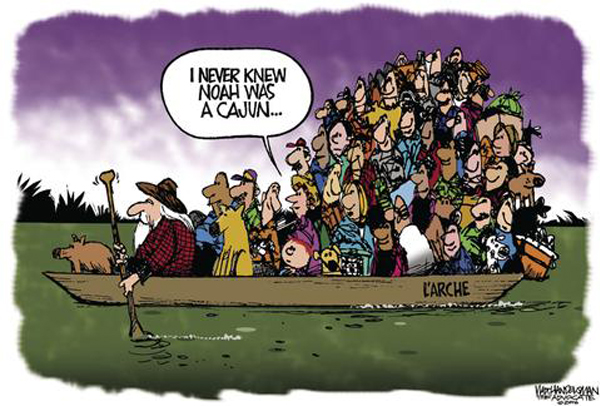
“'Tee' Boudreaux's Future - Ten-dollar bill, Bible and Booze”
Tee Boudreaux is 24 years old and still living at home.
Boudreaux and Marie are starting to worry about what he is going to do with his future.
Boudreaux tells Marie, “Cher, let's do a little test. We goin' to put a ten-dollar bill, a bible and a bottle of booze on de table, and when Tee Boudreaux comes in, we gonna be able to figure out what he's gonna do.”
“If he takes de ten-dollar bill, he's gonna be a business man,
if he picks up de bible, he's gonna be a preacher,
but if he picks up de booze, I'm afraid he's gonna be a bum de rest of his life.”
So the put the stuff out and hid in the closet when they heard Tee coming in.
Tee walks by the table, picks up the ten-dollar bill, looks at it and puts it in his pocket.
Then he picks up the bible, flips through it, and puts it under his arm.
He picks up the bottle of booze, takes a healthy swig out of it, and walks off with the rest of the bottle.
Boudreaux and Marie, were watching all of this through the keyhole, and Boudreaux sighs, “Mais Cher, it looks like our son is gonna be a damn politician !”



































